43 shuffle data and labels python
Pandas Shuffle DataFrame Rows Examples - Spark by {Examples} Use pandas.DataFrame.sample (frac=1) method to shuffle the order of rows. The frac keyword argument specifies the fraction of rows to return in the random sample DataFrame. frac=None just returns 1 random record. frac=.5 returns random 50% of the rows. Note that the sample () method by default returns a new DataFrame after shuffling. 11 Amazing NumPy Shuffle Examples - Like Geeks Let us shuffle a Python list using the np.random.shuffle method. a = [5.4, 10.2, "hello", 9.8, 12, "world"] print (f"a = {a}") np.random.shuffle (a) print (f"shuffle a = {a}") Output: If we want to shuffle a string or a tuple, we can either first convert it to a list, shuffle it and then convert it back to string/tuple;
Ways to shuffle a Tuple in Python - GeeksforGeeks This a simple method to do shuffling in tuples. You can typecast the tuples to a list and then perform shuffling operations done on the list and then typecast that list back to the tuple. One way is to use random.shuffle (). Python3 import random tup = (1,2,3,4,5) print("The original tuple is : " + str(tup)) l = list(tup) random.shuffle (l)
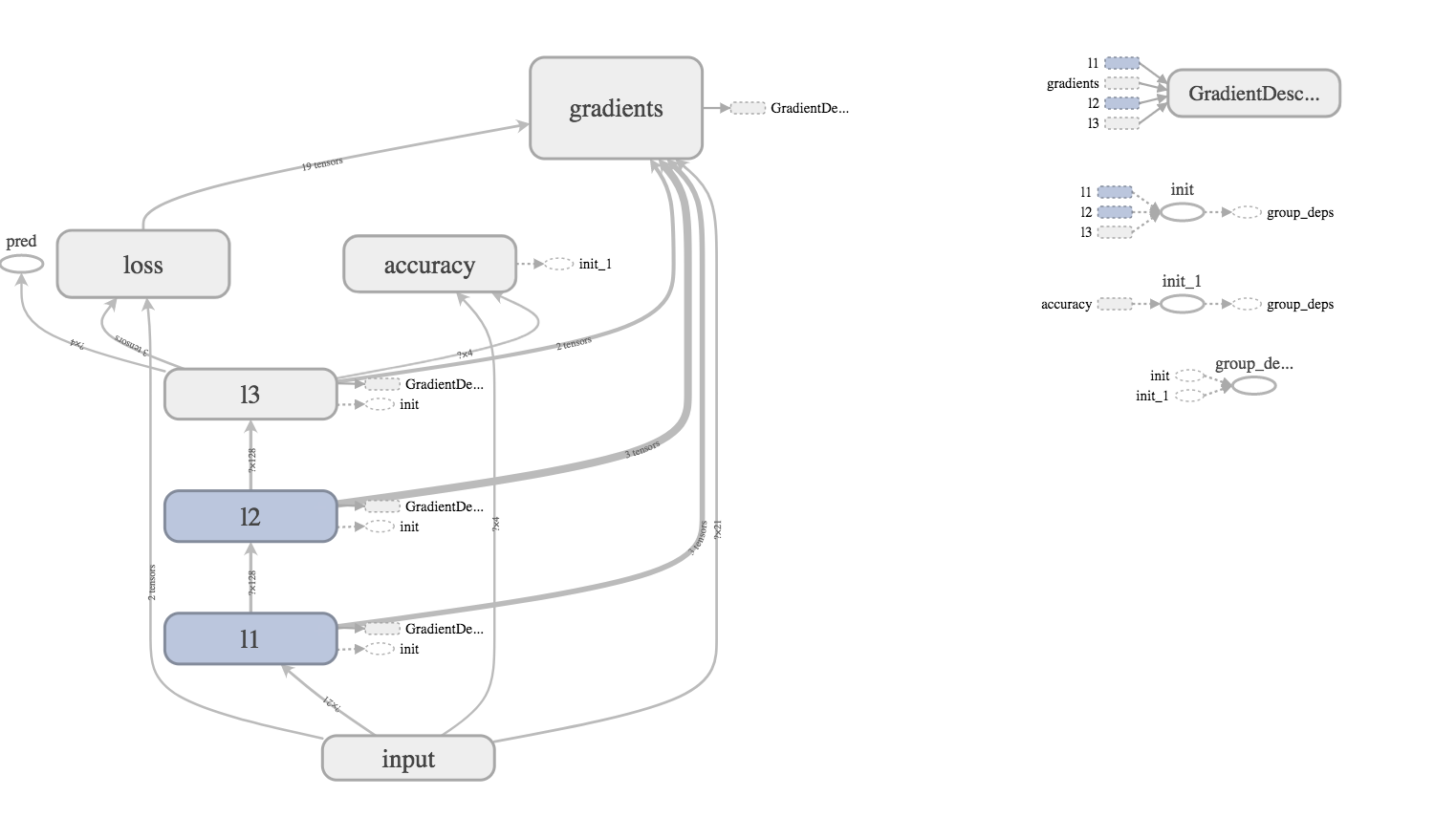
Shuffle data and labels python
python - Randomly shuffle data and labels from different files in the ... In other way, how can l shuffle my labels and data in the same order. import numpy as np data=np.genfromtxt ("dataset.csv", delimiter=',') classes=np.genfromtxt ("labels.csv",dtype=np.str , delimiter='\t') x=np.random.shuffle (data) y=x [classes] do this preserves the order of shuffling ? python numpy random shuffle Share Shuffle an array in Python - GeeksforGeeks Shuffle an array in Python - GeeksforGeeks Shuffle an array in Python Last Updated : 05 Sep, 2021 Shuffling a sequence of numbers have always been a useful utility, it is nothing but rearranging the elements in an array. Knowing more than one method to achieve this can always be a plus. Let's discuss certain ways in which this can be achieved. Python Data Analytics - Javatpoint Python Data Analytics. Data Analysis can help us to obtain useful information from data and can provide a solution to our queries. Further, based on the observed patterns we can predict the outcomes of different business policies. Understanding the basic of Data Analytics Data
Shuffle data and labels python. Snorkel Python for Labelling Datasets Programmatically Snorkel is a Python library that is used for data labelling. It programmatically manages and builds training datasets without manual labelling. In machine learning, labels are the target or the output variable in a dataset. MODEL VALIDATION IN PYTHON | Data Vedas Jun 19, 2018 · Shuffle Split K-Fold Cross-Validation. It is a variant of K-Fold Cross Validation which randomly splits the data so that no observation is left while cross-validating the dataset. Here you can specify the size of the test dataset and n_splits specify the number of times the process of splitting will take place. Running Shuffle Split and ... Python Examples of random.shuffle - ProgramCreek.com The following are 30 code examples for showing how to use random.shuffle().These examples are extracted from open source projects. You can vote up the ones you like or vote down the ones you don't like, and go to the original project or source file by following the links above each example. How To Use Shuffle Function In Python - code-learner.com The shuffle() method usage syntax. # import the python random module import random # invoke the random module's shuffle method and pass a python list object. random.shuffle(list The shuffle() method argument can be a list or a tuple object. The shuffle() method will randomly sort the elements in the list object. 2.
python - Get labels from dataset when using tensorflow image ... Nov 04, 2020 · The tf.data.Dataset object is batch-like object so you need to take a single and loop through it. For the first batch, you do: for image, label in test_ds.take(1): print (label) I used test_ds from your code above because it has the data and labels all in one object. So the take away is that tf.data.Dataset object is a batch-like object. Python Examples of numpy.long - ProgramCreek.com The following are 30 code examples for showing how to use numpy.long().These examples are extracted from open source projects. You can vote up the ones you like or vote down the ones you don't like, and go to the original project or source file by following the links above each example. How to Shuffle Pandas Dataframe Rows in Python • datagy # Reproducing a shuffled dataframe in Pandas with random_state= shuffled = df.sample(frac=1, random_state=1).reset_index() print(shuffled.head()) # Returns: # index Name Gender January February # 0 6 Melissa Female 75 100 # 1 2 Kevin Male 75 75 # 2 1 Kate Female 95 95 # 3 0 Nik Male 90 95 # 4 4 Jane Female 60 50 How to randomly shuffle data and target in python? - Stack Overflow If you're looking for a sync/ unison shuffle you can use the following func. def unisonShuffleDataset (a, b): assert len (a) == len (b) p = np.random.permutation (len (a)) return a [p], b [p] the one above is only for 2 numpy. One can extend to more than 2 by adding the number of input vars on the func. and also on the return of the function.
Python | Ways to shuffle a list - GeeksforGeeks Method #1 : Fisher-Yates shuffle Algorithm This is one of the famous algorithms that is mainly employed to shuffle a sequence of numbers in python. This algorithm just takes the higher index value, and swaps it with current value, this process repeats in a loop till end of the list. Python3 # Python3 code to demonstrate # shuffle a list Split Your Dataset With scikit-learn's train_test_split() - Real Python shuffle is the Boolean object (True by default) that determines whether to shuffle the dataset before applying the split. stratify is an array-like object that, if not None, determines how to use a stratified split. Now it's time to try data splitting! You'll start by creating a simple dataset to work with. A detailed example of how to use data generators with Keras Create a dictionary called labels where for each ID of the dataset, the associated label is given by labels[ID] For example, let's say that our training set contains id-1, id-2 and id-3 with respective labels 0, 1 and 2, with a validation set containing id-4 with label 1. In that case, the Python variables partition and labels look like DICOM Processing and Segmentation in Python – Radiology Data ... Jan 05, 2019 · Processing raw DICOM with Python is a little like excavating a dinosaur – you’ll want to have a jackhammer to dig, but also a pickaxe and even a toothbrush for the right situations. Python has all the tools, from pre-packaged imaging process packages handling gigabytes of data at once to byte-level operations on a single voxel.
PyTorch DataLoader shuffle - Python PyTorch DataLoader shuffle - Python PyTorch DataLoader shuffle I did an experiment and I did not get the result I was expecting. For the first part, I am using 3 1 trainloader = torch.utils.data.DataLoader(trainset, batch_size=128, 2 shuffle=False, num_workers=0) 3
Shuffle, Split, and Stack NumPy Arrays in Python - Medium First, split the entire dataset into a training set and a testing set. Second, split the features columns from the target column. For example, split 80% of the data into train and 20% into test, then split the features from the columns within each subset. # given a one dimensional array
Python | Shuffle two lists with same order - GeeksforGeeks Method : Using zip () + shuffle () + * operator In this method, this task is performed in three steps. Firstly, the lists are zipped together using zip (). Next step is to perform shuffle using inbuilt shuffle () and last step is to unzip the lists to separate lists using * operator. import random test_list1 = [6, 4, 8, 9, 10]
python - Loading own train data and labels in dataloader using pytorch ... I have a dataset that I created and the training data has 20k samples and the labels are also separate. Lets say I want to load a dataset in the model, shuffle each time and use the batch size that I prefer. The Dataloader function does that. How can I combine and put them in the function so that I can train it in the model in pytorch?
python - How to train/test/split data based on labels ... - Stack Overflow 3 Answers Sorted by: 1 Normally you would not want to do that but, following solution can work. I tried on a very small dataframe but seems to do the job. import pandas as pd Df = pd.DataFrame () Df ['label'] = ['S', 'S', 'S', 'P', 'P', 'S', 'P', 'S'] Df ['value'] = [1, 2, 3, 4, 5, 6, 7, 8] Df X = Df [Df.label== 'S'] Y = Df [Df.label == 'P']
Python Number shuffle() Method - Tutorialspoint Description. Python number method shuffle() randomizes the items of a list in place.. Syntax. Following is the syntax for shuffle() method −. shuffle (lst ) Note − This function is not accessible directly, so we need to import shuffle module and then we need to call this function using random static object.. Parameters. lst − This could be a list or tuple. ...
Python Shuffle List | Shuffle a Deck of Card - Python Pool Python Shuffle a List Using shuffle() Function. The shuffle() function in Python random module can be used to shuffle a list.. Shuffling is performed in place, meaning that the list provided as an argument to the shuffle() function is shuffled rather than a shuffled copy of the list being made and returned.
python randomly shuffle rows of pandas dataframe Code Example python randomly shuffle rows of pandas dataframe. # Basic syntax: df = df.sample (frac=1, random_state=1).reset_index (drop=True) # Where: # - frac=1 specifies returning 100% of the original rows of the # dataframe (in random order). Change to a decimal (e.g. 0.5) if # you want to sample say, 50% of the original rows # - random_state=1 sets the ...
python - logits and labels must be broadcastable error in ... Jul 30, 2018 · I met the similar problems when using the CNN, the problem occurs because I changed the labels data type as np.uint8 in the Generator function while did nothing for the labels type in the rest of my code. I solved the problem by changing the labels type to uint8 in all of my code.
Dataset Splitting Best Practices in Python - KDnuggets Thankfully, the train_test_split module automatically shuffles data first by default (you can override this by setting the shuffle parameter to False ). To do so, both the feature and target vectors ( X and y) must be passed to the module. You should set a random_state for reproducibility.
Pandas - How to shuffle a DataFrame rows - GeeksforGeeks Shuffle the rows of the DataFrame using the sample () method with the parameter frac as 1, it determines what fraction of total instances need to be returned. Print the original and the shuffled DataFrames. # import the modules import pandas as pd import numpy as np # create a DataFrame ODI_runs = {'name': ['Tendulkar', 'Sangakkara', 'Ponting',
Python Random shuffle() Method - W3Schools The shuffle () method takes a sequence, like a list, and reorganize the order of the items. Note: This method changes the original list, it does not return a new list. Syntax random.shuffle ( sequence, function ) Parameter Values More Examples Example You can define your own function to weigh or specify the result.
Shuffle in Python - Javatpoint In the second method, we will see how shuffle () can be used to shuffle the elements of our list. Consider the program given below- import random # initializing the list list_values1 = [11,20,19,43,22,10] # Printing the list print ("The initialized list is : ", (list_values1)) #using shuffle () random.shuffle (list_values1)
Splitting Your Dataset with Scitkit-Learn train_test_split February 22, 2022. In this tutorial, you'll learn how to split your Python dataset using Scikit-Learn's train_test_split function. You'll gain a strong understanding of the importance of splitting your data for machine learning to avoid underfitting or overfitting your models. You'll also learn how the function is applied in many ...
Randomly shuffle data and labels from different files in the same order l have two numpy arrays the first one contains data and the second one contains labels. l want to shuffle the data with respect to their labels. In other way, how can l shuffle my labels and data in the same order. import numpy as np data=np.genfromtxt('dataset.csv', delimiter=',') classes=np.genfromtxt('labels.csv',dtype=np.str , delimiter='\t ...
Python - How to shuffle two related lists (training data and labels ... answered Oct 21, 2019 by pkumar81 (45.3k points) You can try one of the following two approaches to shuffle both data and labels in the same order. Approach 1: Using the number of elements in your data, generate a random index using function permutation (). Use that random index to shuffle the data and labels. >>> import numpy as np
Python Data Analytics - Javatpoint Python Data Analytics. Data Analysis can help us to obtain useful information from data and can provide a solution to our queries. Further, based on the observed patterns we can predict the outcomes of different business policies. Understanding the basic of Data Analytics Data





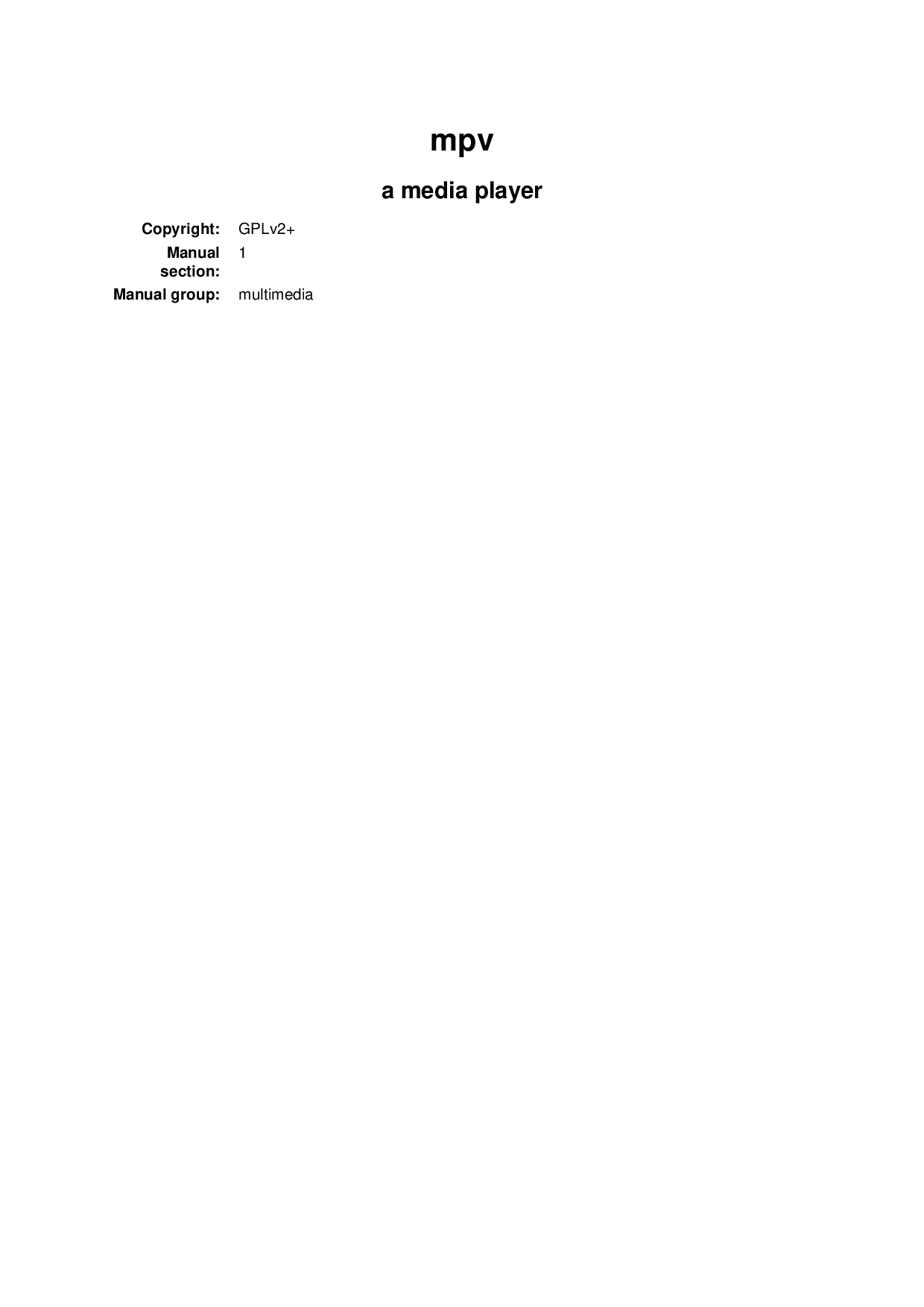


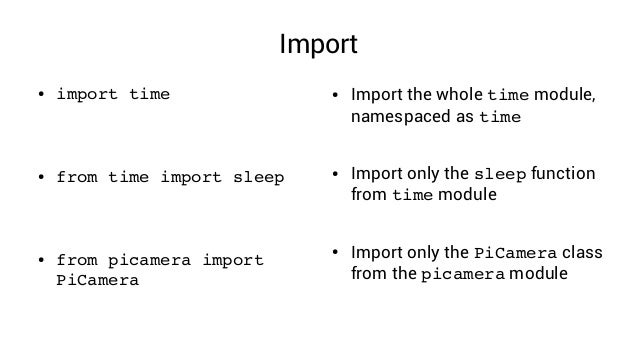
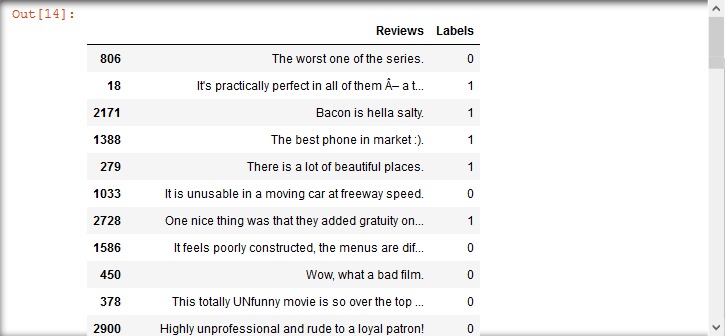
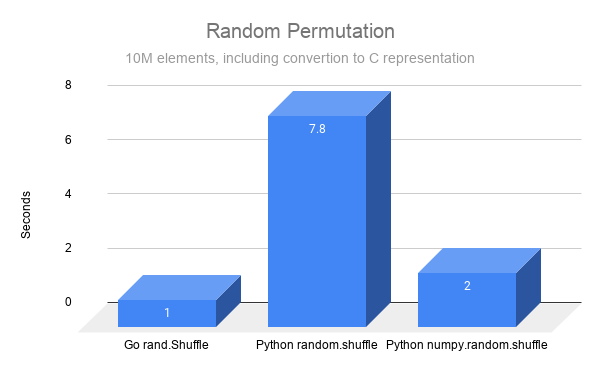



Post a Comment for "43 shuffle data and labels python"